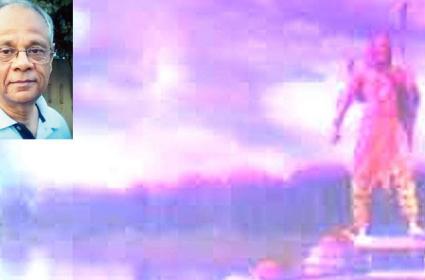Putting Ayodhya On Tourism Map May Not Relieve Yogi Of His Other Responsibilities

Mahesh Vijapurkar
Though Ayodhya has been in the limelight because of the Ram Temple-Babri Mosque for some decades now, and almost always in the news, and politics centred around it, I am wracking my brains to recall if I knew anyone among the people I know if they had ever visited it, or even expressed a desire to.
Normally, it is the char dham - Badrinath, Dwarka, Puri and Rameswaram – or Kashi, and the dozen jyotirlingas that find mention among the devout as a part of ‘must visit’ destinations.
Obviously, on a pan-India basis, Ayodhya, despite being one of the seven cities, saptapuri, which include some of the above, is not a top destination.
With this backdrop, one needs to see the much-criticised celebration of Diwali, lighting enough lamps to get into the Guinness Book of Records last week. It isn’t as if Yogi Adityanath, the UP Chief Minister did something extraordinary to showcase his brand of Hindutva. He wasn’t rebuilding the demolished disputed structure by planning a 100-ft high statue of Ram.
Of course, I have issues with some of the advocacies of Yogi – my belief, primarily, is no sadhu who has renounced the worldly things to be one, to start with – including the cow issue which ignores economic aspects of the ban, about cow vigilantism. But I shall not reject his bid to put Ayodhya on the tourist map, mostly domestic.
One hopes, however, that the statue comes up with sufficient backups like hotel rooms and transport. That the area is well managed, and not becomes the locale for only generously dipping into the pockets of the tourists, with no concern for providing valule for money spent.
If the Ganga could have its elaborate and spectacular nightly aartis – you would have seen it on TVs on Shivaratri or when Narendra Modi took a visiting world leader or two – why not Sharayu, equally associated with a holy place? If Ayodhya was a holy place because of Ram’s association with it, Sarayu becomes holy.
When I spent a month in Varanasi in the winter of 1980, and often visited the ghats, there were no such aartis, at least on the scale we see now. If that was acceptable, and mind you, not a whimper, and made out as if the aartis as is now on display was an old tradition, I am surprised. In promoting tourist places, new attractions are alright.
So, the aarti of the Sarayu is fine.
So is a big statue of Ram. Such a statue is intrinsic to Ayodhya, and it has little to do with the disputed site and the idols there, and to see it as a mischief is pure apple sauce. It could well be the major attraction for tourism, and in the absence of a motif of the city – Mumbai has the Gateway, Hyderabad its Charminar – the idea of a statue on the Sarayu bank is a good one.
It is, at the least, less mischievous than the stupid idea that the Taj Mahal was earlier a temple to Shiva. Such contention by ill-informed UP ministers was just that – a regurgitation of claims made by PN Oak. Nor is it as outrageous as seeking to rebuild the Ram temple at the spot where the disputed structure once stood and pulled down.
There’s no need at all to fuss at the move to make Ayodhya a good tourist place – after all most domestic tourism is about visiting relatives and pilgrim places. The attempt needn’t be seen from a binary perspective. It is a harmless move. But it does not mean, I’d like to tell the Yogi, that other major administrative issues like tackling child-deaths in hospitals can be overlooked.
















